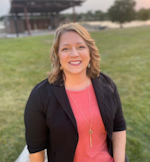Alternative career paths for dental hygienists: Myofunctional therapy or lactation consulting
Dental hygienists play a crucial role in our patients' oral health and overall well-being. However, the field of dentistry is constantly evolving, and it’s important for us to adapt and expand our skills to meet the changing needs of patients.
Two exciting avenues for dental hygienists who want to diversify their professional portfolio are myofunctional therapist or lactation consultant. By embracing these alternative careers, you can bridge the gap between dentistry and medicine, creating a more holistic approach to health care. Here I’ll explore why dental hygienists should consider these alternative roles and how changing can benefit both practitioners and patients.
You might also be interested in: The importance of tongue posture
Myofunctional therapy: a pathway to enhanced patient care
Myofunctional therapy involves retraining the oral and facial muscles to correct dysfunctional patterns in breathing, chewing, swallowing, and oral posture. This therapy has shown to provide significant improvements in conditions such as sleep apnea, headaches, GERD, TMD, and neck pain.1 Myofunctional therapy paired with a lingual frenuloplasty has shown to improve mouth breathing, snoring, clenching, and facial tension.2 By becoming trained as myofunctional therapists, dental hygienists can expand their scope of practice and offer additional services that go beyond traditional dental hygiene care.
One of the unique advantages of dental hygienists transitioning into myofunctional therapy is their in-depth knowledge of oral structures. Dental hygienists are well-equipped to screen and identify disorders that could benefit from myofunctional therapy. By incorporating this therapy into their practice, dental hygienists can provide a more comprehensive and holistic approach to patient care.
Furthermore, myofunctional therapy is a collaborative specialty that often works closely with other health-care professionals such as dentists, ENTs, and bodyworkers. This collaboration offers an excellent opportunity for dental hygienists to leverage their skills and knowledge while working as part of a multidisciplinary health-care team. By bridging the gap between dentistry and medicine, dental hygienists can contribute to a more integrated and patient-centered health-care system.
The role of lactation consultant: an unexpected connection
Becoming a lactation consultant may seem like a departure from dental hygiene, but it’s actually a natural extension of our understanding of oral structures and functions. Proper breastfeeding techniques are crucial for infant oral development and craniofacial growth, which is affected by functional stimuli such as breathing, swallowing, chewing, and sucking.3 Dental hygienists can play a vital role in advising new mothers and resolving any breastfeeding issues.
By transitioning into the role of lactation consultant, dental hygienists can provide valuable guidance to new mothers, ensuring optimal oral health for their infants. This role allows hygienists to contribute to the well-being of both mothers and babies, fostering a holistic approach to health care.
Bridging the gap between dentistry and medicine
As our understanding of the systemic nature of human health evolves, there’s an increasing recognition of the need for more integrated care. Dental hygienists transitioning into myofunctional therapy or lactation consulting are uniquely positioned to facilitate this integration, fostering better communication and collaboration among different health-care providers.
If you want to embark on this career transition, networking is essential. Attending live networking events such as CAREERfusion can open doors to new opportunities. These events provide a platform for health-care providers to connect with those already in expanded roles to gain insights into their experiences and learn about their paths. Additionally, networking allows for relationships with mentors and professionals who can provide guidance.
Change for a brighter future
Transitioning into myofunctional therapy or lactation consulting can be a refreshing change, a rewarding side hustle, or a new full-time venture. These roles allow dental hygienists to use their knowledge in exciting ways, expand their horizons, and make a meaningful impact on patients' lives.
RDHs have the power to redefine their roles in the health-care system. By seeking complementary career options such as myofunctional therapy and lactation consulting, dental hygienists can leverage their skills, bridge the gap between dentistry and medicine, combat burnout, and most importantly, make a positive difference in patients' lives. The future of dental hygiene is bright and interconnected with the broader health-care community. Let’s embrace this evolution, expand our horizons, and continue to make a difference, one smile at a time.
References
- de Felício CM, Melchior MDO, da Silva MAMR. Effects of orofacial myofunctional therapy on temporomandibular disorders. Cranio. 2010;28(4):249-259. doi:10.1179/crn.2010.033
- Zaghi S, Valcu‐Pinkerton S, Jabara M, er al. Lingual frenuloplasty with myofunctional therapy: exploring safety and efficacy in 348 cases. Laryngoscope Investig Otolaryngol. 2019;4(5):489-496. doi:10.1002/lio2.297
- Proffit WR, Fields HW, Sarver DM. Contemporary Orthodontics. Third ed. 2000; Mosby.







